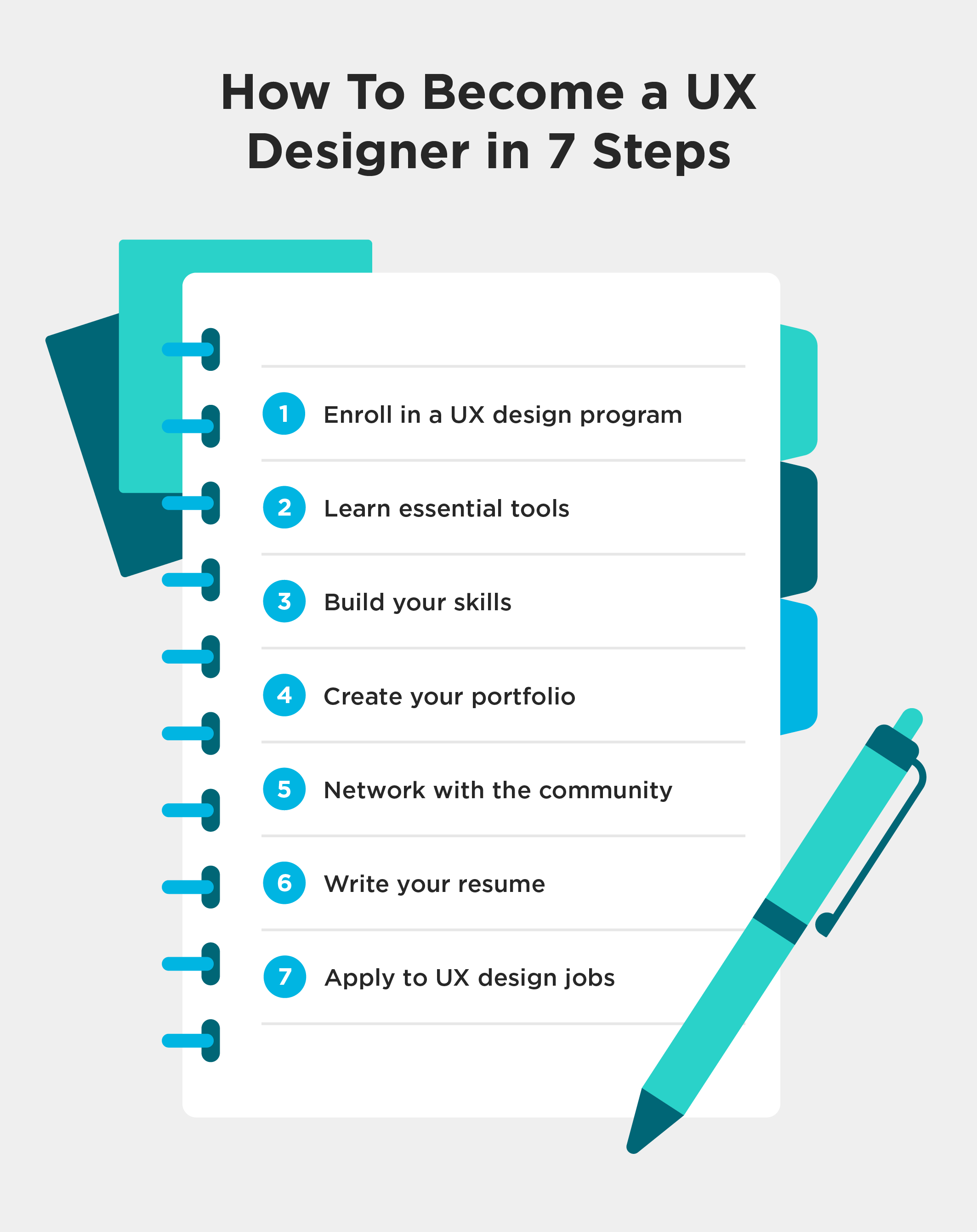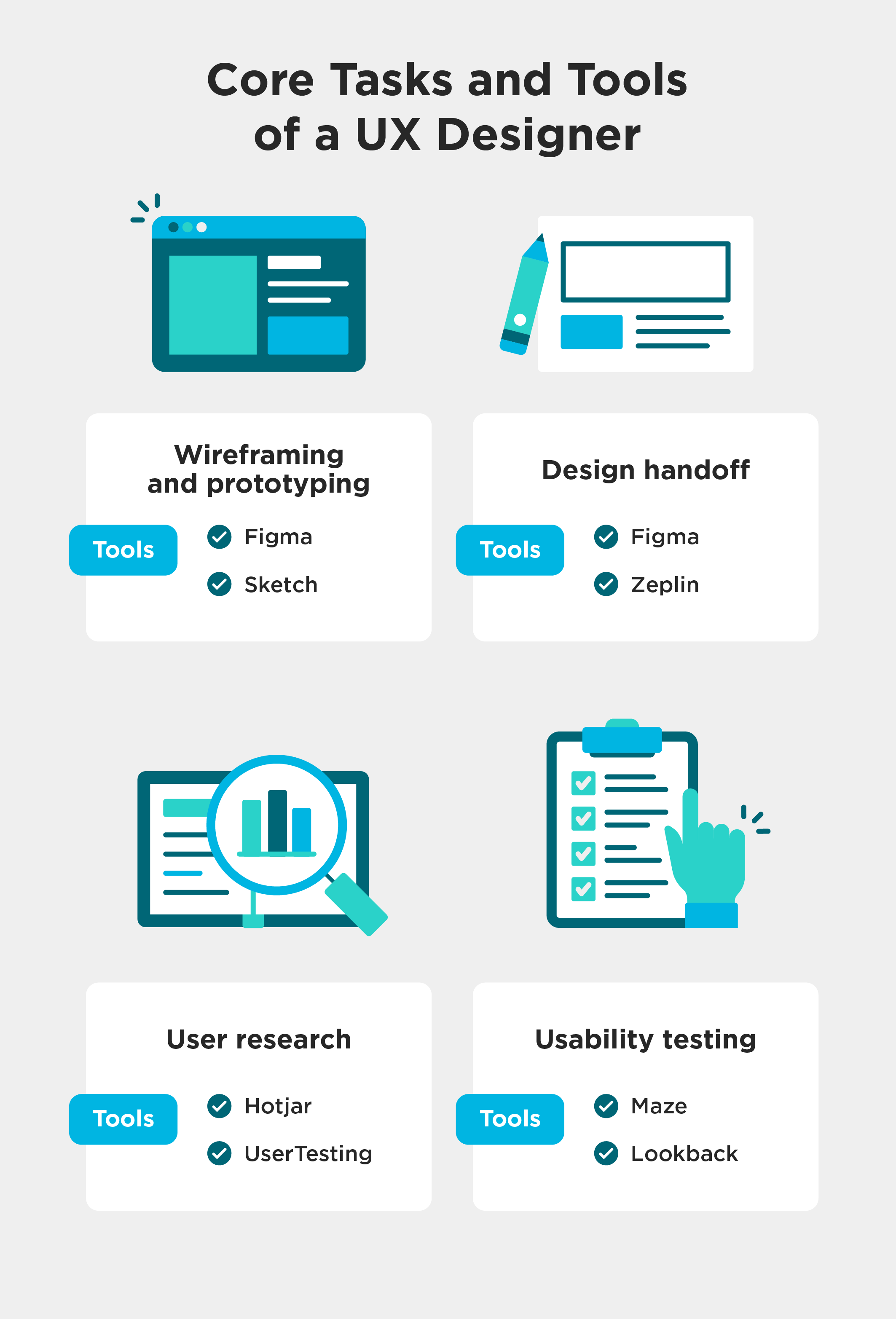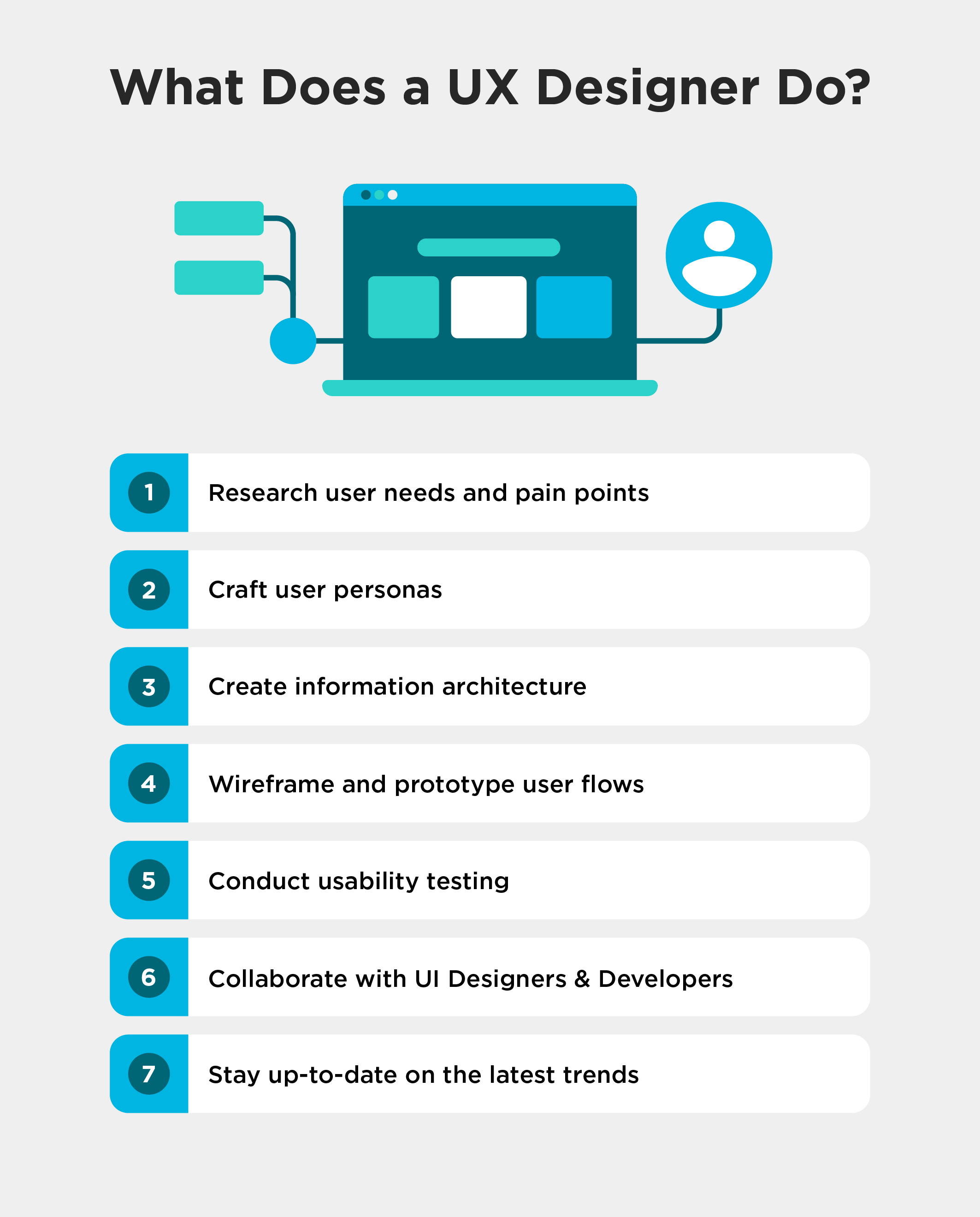How To Become a UX Designer in 7 Simple Steps (2024 Guide)

quick answer
How to become a UX Designer in seven steps:
1. Enroll in a UX design program.
2. Learn essential UX design tools.
3. Build your skills.
4. Create your portfolio.
5. Network with the UX community.
6. Write your resume.
7. Apply to UX design jobs.
In This Article
Ever wondered why some apps are frustrating to use while others feel like a breeze? That’s the difference in user experience (UX) design!
UX Designers are the behind-the-scenes heroes who craft user experiences that are intuitive, enjoyable, and meet our needs perfectly. If you’re looking for a creative and in-demand career with the power to shape how people interact with technology, then UX design might be for you.
This post will guide you through everything you need to know about how to become a UX Designer, even if you’re starting from scratch. We’ll cover the career developmentsteps, the skills you need to learn, and what kind of salary you can expect in this exciting field.

While there aren’t necessarily UX design education requirements, an educational program can provide a strong foundation or supplement your knowledge of the core principles and practices.
For instance, Robertson College’s e-Commerce Professional program incorporates UX design principles alongside essential e-commerce skills, giving you a well-rounded skillset for the modern digital landscape.
Here are some additional educational options to consider:
Mastering the right UX design tools is crucial for efficiently bringing your ideas to life. The specific tools you’ll use will vary depending on the project and workflow. However, if you decide not to pursue an education program, you should aim to familiarize yourself with the following:

Learning the theory and tools is just the beginning. To truly excel in UX design, you need to solidify your skills and improve your strengths through practical application. There are two ways to achieve this:
A strong UX design portfolio is your ultimate calling card, showcasing your skills, design process, and problem-solving abilities to potential employers. Focus on quality over quantity, and curate a selection of projects that best demonstrate your strengths and versatility.
When building your portfolio, consider including case studies that detail each project’s:
A well-organized and user-friendly portfolio website is ideal, but even a well-structured PDF document can be effective.
The UX design field thrives on collaboration and knowledge sharing. Networking is important for your professional growth within the UX community. These connections can provide you with valuable mentorship, job opportunities, and insights into the latest industry trends. Here are a few ideas on how to reach out:
Your resume serves as a first impression for potential employers, so crafting a clear and concise document that showcases your UX design skills is crucial. Here’s how to make a resume that gets noticed:
Once you’ve honed your skills and built a strong portfolio and resume, it’s time to start applying for UX design jobs. The UX field offers a diverse range of opportunities, so you can find a role that aligns with your interests and skillset. Here are some relevant job titles to keep an eye out for:
UX Designers are the champions of the user’s experience with a product or service. They wear many hats, but their core mission is to ensure that users have a positive and intuitive interaction from start to finish.
Here are some key duties and tasks of a UX Designer:

To excel in UX design, you need both technical proficiency and strong soft skills. You’ll need a solid foundation in design principles and user research methodologies, but interpersonal and communication skills are equally important to collaborate effectively and translate user needs into actionable design solutions.
Here’s a breakdown of the essential skillsets for UX Designers:
Hard skills:
Soft skills:
The median UX Designer salary in Canada is $29.60 per hour or $61,568 per year. While that’s the median salary, more experienced UX Designers can earn $46.63 per hour or $96,990 per year. A UX Designer’s salary can also vary depending on:
| Average Hourly Wages for UX Designers | |||
|---|---|---|---|
| Location | Low ($/hour) | Median ($/hour) | High ($/hour) |
| Alberta | $20 | $28 | $54.05 |
| British Columbia | $20.67 | $31.25 | $56 |
| Manitoba | $15.30 | $23.08 | $36 |
| New Brunswick | $15.85 | $28.95 | $45 |
| Newfoundland and Labrador | $30.25 | $31.73 | $65.93 |
| Nova Scotia | $20 | $26.92 | $45.79 |
| Ontario | $18.28 | $31.25 | $43.59 |
| Prince Edward Island | $18.75 | $24.52 | $33.33 |
| Quebec | $19.57 | $25 | $46 |
Still not sure if UX design is the career for you? This section answers some of the most common questions about UX design.
Yes, it’s possible to become a UX Designer without any experience. The field values transferable skills and a passion for user-centred thinking. With focused learning and a strong portfolio, you can break into this field without prior experience.
Yes, UX design is a growing field. As technology continues to evolve, so does the need for user-friendly experiences. This trend makes UX design a secure career choice.
Formal education can be helpful, but a strong foundation in UX principles, design thinking, and relevant software is key. A portfolio showcasing your problem-solving skills and design process is essential.
How long it takes to become a UX Designer depends on your learning style and goals. You can acquire basic skills through online courses in a few months, while a boot camp or degree program can take a year or more. Building a strong portfolio is an ongoing process.
The journey to becoming a UX Designer is an investment in your future, and there are many resources available to help you get there.
If you’re interested in a well-rounded education that incorporates UX design principles alongside essential e-commerce skills, consider Robertson College’s e-Commerce Professional program.
In This Article
Once you take the first step, one of our Student Admissions Advisors will get in touch to better understand your goals for the future.
Apply Now